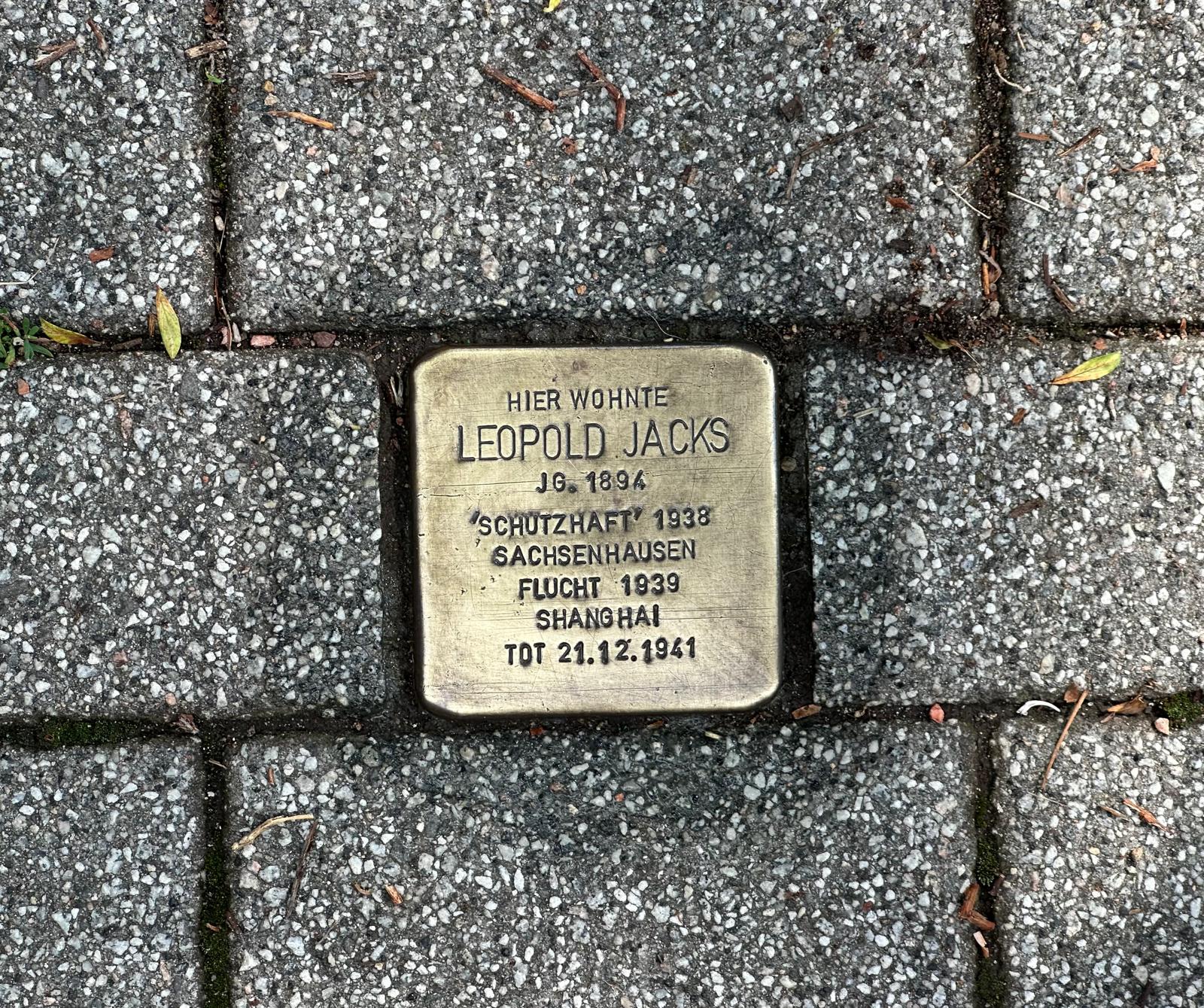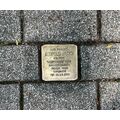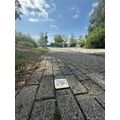Leopold Jacks

Leopold Jacks – Ein Leben im Exil (Deutsch)
Leopold Jacks war ein Händler, Kaufmann und Ladenbesitzer in Schwedt/Oder. Er wurde am 24. Mai 1894 in Berlin-Rummelsburg geboren. Sein Laden, in dem er Damenwäsche und massenproduzierte Kleidung verkaufte, befand sich zunächst im Haus von Fritz Schiebel, am heutigen Polderblick 5, und ab etwa 1938 in der Brückenstraße 10.
Sein Name und die Adresse seines Geschäfts tauchen in Schwedter Adressbüchern von 1926, 1931 und 1938 auf, was belegt, dass er in dieser Zeit dort lebte. Im Jahr 1938 wurde Leopold ohne rechtliche Grundlage inhaftiert und in das Konzentrationslager Sachsenhausen in sogenannte "Schutzhaft" gebracht. Aus Dokumenten lässt sich schließen, dass er entlassen wurde oder fliehen konnte, denn er lebte anschließend bis zum 28. Mai 1939 in der neuen Königsstraße 88 in Berlin-Friedrichshain.
Von dort floh er ins Exil nach Shanghai, wo er dank seiner in Schwedt erworbenen Kenntnisse über Tabakanbau als sogenannter „Tobacco Dealer“ arbeiten konnte. Am 21. Dezember 1941 starb Leopold Jacks im Exil in Shanghai an einer Herzentzündung.
Nach seinem Tod versuchten die Nazis, die Überreste seines Eigentums und des bereits aufgelösten Geschäfts zu verwerten. Es existieren nur wenige bekannte Dokumente über ihn. Hinweise deuten darauf hin, dass Alfred Jacks, geboren 1896
Leopold Jacks:
- Geburt: 24. Mai 1894, Berlin-Rummelsburg
- Tod: 21. Dezember 1941 in Shanghai, Herzentzündung
- Familie (vermutlich): Alfred Jacks (geb. 1896) evtl. Bruder, Sally Jacks (geb. 1873) evtl. Vater
- Beruf: Händler/Kaufmann, Ladenbesitzer in Schwedt/Oder
- Ladenstandorte: Bis ca. 1938: Polderblick 5 (im Haus von Fritz Schiebel), ab 1938: Brückenstraße 10
- Sortiment: Damenwäsche, massenproduzierte Kleidung
- Schutzhaft: Verhaftung ohne Rechtsgrundlage, 1938 im KZ Sachsenhausen
- Nach KZ: Entlassen/entkommen, lebte bis Mai 1939 in Berlin (Neue Königsstraße 88)
- Exil: Flucht nach Shanghai; dort als Tabakhändler tätig
Leopold Jacks – A Life in Exile (English)
Leopold Jacks was a merchant, tradesman, and shop owner in Schwedt/Oder. Born on May 24, 1894 in Berlin-Rummelsburg, he ran a store selling women's underwear and mass-produced clothing. His shop was initially located in the house of Fritz Schiebel at today's Polderblick 5, and around 1938, at Brückenstraße 10.
Leopold appears in Schwedt address books from 1926, 1931, and 1938, confirming his residence there. In 1938, he was imprisoned without legal grounds and placed in “protective custody” in Sachsenhausen concentration camp. He was later either released or escaped, and moved to Neue Königsstraße 88 in Berlin-Friedrichshain, where he lived until May 28, 1939.
From there, he fled into exile in Shanghai. Thanks to knowledge he had acquired in Schwedt about tobacco cultivation, he was able to work there as a so-called “tobacco dealer”. Tragically, Leopold Jacks died in exile on December 21, 1941, of heart inflammation. After his death, the Nazis tried to confiscate what remained of his already-dissolved store.
Only a few documents survive about his life. It is believed that Alfred Jacks (b. 1896) may have been his brother and Sally Jacks (b. 1873) a relative, possibly his father.
Why Shanghai?
As Nazi persecution intensified, many Jews searched desperately for refuge. Shanghai—still visa-free—became one of the last open ports of refuge. Between 1938 and 1939, particularly after Kristallnacht, around 17,000 Jews fled there from Germany, Austria, and Poland.
Shanghai had unique political conditions due to its International Settlement and French Concession. Despite World War II, parts of the city remained initially free from Japanese occupation, and by 1942, more than 150,000 foreigners lived there, including stateless refugees.
Fleeing to Shanghai was not easy. Until 1940, refugees often traveled via Italy on ships. Later, they had to take the Trans-Siberian Railway, needing visas for both the Soviet Union and Japan. The Japanese consul Chiune Sugihara in Kaunas famously issued thousands of such visas.
The Nazis limited refugees to 10 Reichsmarks per person and banned jewelry or valuables. The Gestapo thoroughly inspected every item of luggage.
Life in Exile
In 1943, the Japanese forcibly relocated Jewish refugees to the Hongkew district, a war-damaged area. Despite overcrowding and poor hygiene, refugees formed a vibrant community: schools, newspapers, and cultural life flourished.
Many preserved their German-Jewish identity, facing little antisemitism from the Chinese population. For most, Shanghai was a “waiting room” before emigrating elsewhere after the war.
The ghetto was liberated by American troops on August 14, 1945. Between 1946 and 1949, most refugees left—heading for the U.S., Israel, Australia, or back to Europe. Aid organizations like HIAS, JOINT, and UNRRA supported them on their journey.
An Overlooked Chapter
The Jewish refugee experience in Shanghai is often forgotten. It shows how Japan, despite its alliance with Nazi Germany, did not persecute Jews. For thousands, Shanghai was a lifesaving sanctuary when nearly all other doors had closed.
Leopold Jacks:
- Birth: May 24, 1894, Berlin-Rummelsburg
- Death: December 21, 1941, in Shanghai, heart inflammation
- Family (presumed): Alfred Jacks (b. 1896), possibly brother
Sally Jacks (b. 1873), possibly father
- Profession: Merchant/shopkeeper in Schwedt/Oder
- Store locations: Until approx. 1938: Polderblick 5 (in the house of Fritz Schiebel)
From 1938: Brückenstraße 10
- Products: Women’s underwear, mass-produced clothing
- Protective custody: Arrested without legal grounds in 1938, imprisoned in Sachsenhausen concentration camp
- After camp: Released or escaped, lived in Berlin (Neue Königsstraße 88) until May 1939
- Exile: Fled to Shanghai; worked there as a tobacco dealer




